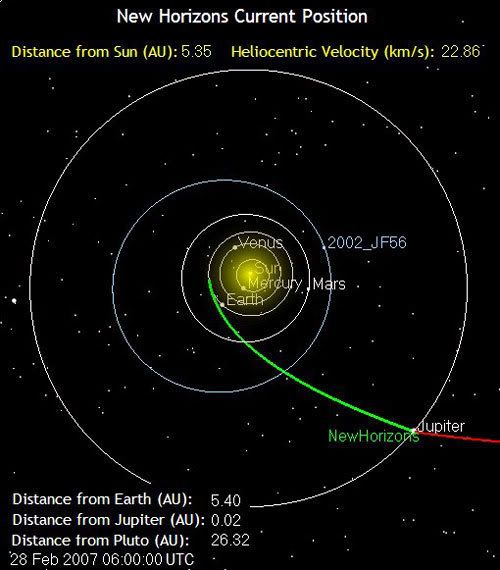
ABOVE: The green line marks the path traveled by the New Horizons spacecraft as of
10:00 PM, Pacific Standard Time, on February 27, 2007. It is 502 million miles from
Earth. Click here to view the official webpage showing where New Horizons is in
space. (AU stands for Astronomical Units, in case you're wondering.)
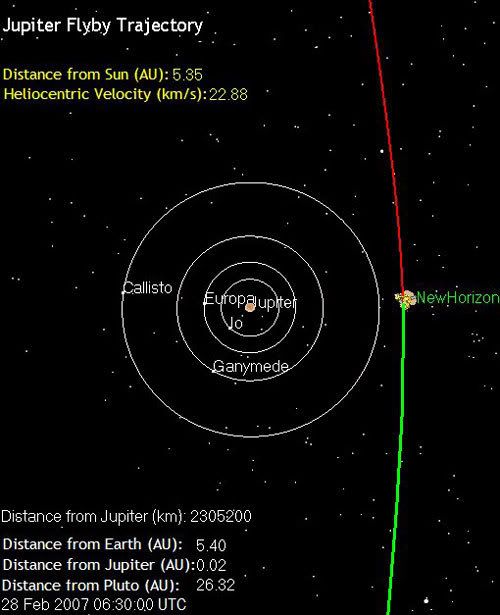
ABOVE: The green line marks the path traveled by the New Horizons spacecraft near
Jupiter as of 10:30 PM, PST, on February 27, 2007. It is 1.4 million miles from the gas
giant.
NEW HORIZONS Update... At 9:43 PM (Pacific Standard Time) tonight, the NASA spacecraft made its closest approach to Jupiter...allowing it to gain an extra speed of 9,000 miles per hour (or 4 kilometers per second) in the process, and thus setting the probe up for a July 14, 2015 encounter with Pluto. Without the Jupiter flyby, it would've taken New Horizons three more years to reach the dwarf planet. The spacecraft, which has been gaining speed because of Jupiter’s gravity well since February 14, has been observing the giant planet since January 8, and will continue to do so till June. By then, the spacecraft will have made around 700 separate observations of the giant planet (click here to see the photos taken of Jupiter so far). Interestingly, New Horizons will actually collect more data at Jupiter than it will at Pluto, its primary target. But that’s because the folks involved with the mission want to put the spacecraft through its paces now to ensure everything works properly...so that there will be no unexpected events once Horizons finally arrives at Pluto in 2015.
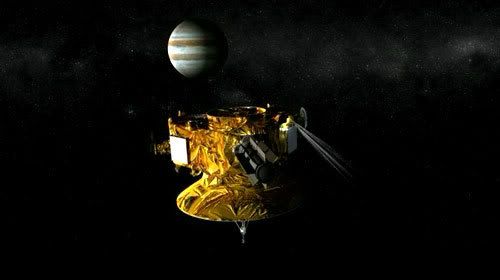
Past and Future Orbit Crossing Dates (Projected)
Earth’s Moon: January 19, 2006 (8 hours, 35 minutes after launch)
Mars: April 7, 2006
Saturn: June 8, 2008
Uranus: March 18, 2011
Neptune: August 24, 2014
Pluto: July 14, 2015
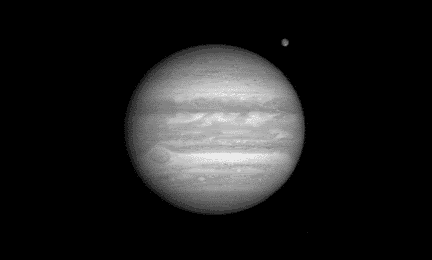
ABOVE: This "movie" was taken by New Horizons' LORRI camera on January 9,
2007. The spacecraft was about 50 million miles from Jupiter when it was taken.
Later this year, right after all the data from Jupiter has been transmitted back to Earth, New Horizons will finally be placed into "hibernation" mode...which will allow the spacecraft to conserve energy over the next 8 years of its voyage by shutting down all but the most important electrical systems onboard. Around August, Horizons will be re-awakened for its first annual check-up. Every year till mid 2014 (New Horizons will officially begin Pluto final encounter operations on April 12, 2015), the spacecraft will be taken out of hibernation for about 50 days so that mission controllers here on Earth can check on its systems to ensure everything is working fine. Once everything is verified, New Horizons will be put back to sleep as it coasts through billions of miles of deep space...en route to the (former) 9th planet in the solar system.
NEW HORIZONS Blog Entries Archive:
September 26, 2005
December 19, 2005
January 7, 2006
January 17, 2006
January 19, 2006
April 12, 2006
June 15, 2006
February 27, 2007
UPDATE: On February 25, the image below was taken by the Philae lander that's currently attached to the European Space Agency's Rosetta spacecraft. Launched on March 2, 2004, Rosetta passed by Mars for a gravitational assist as it heads for comet 67P/Churyumov-Gerasimenko, where it will arrive in May of 2014. Philae will be dropped onto the comet's nucleus to study it during the 1½ year-long mission.
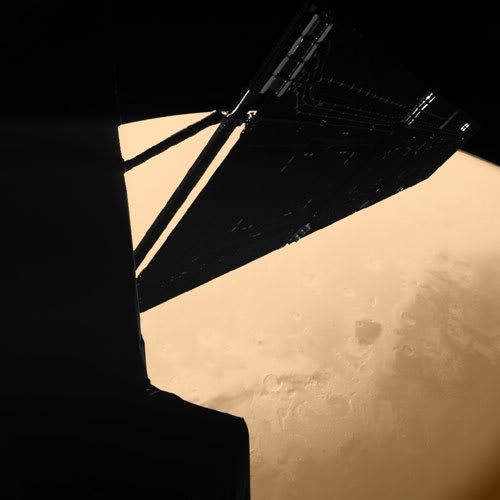

No comments:
Post a Comment